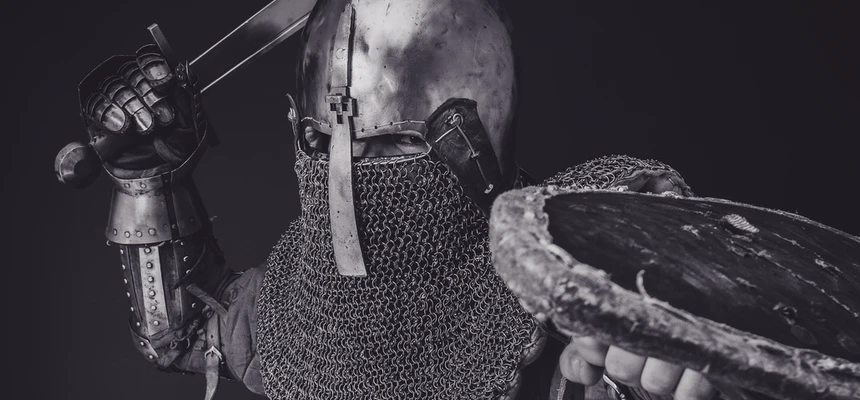
Pope Lucius II was born Gherardo Caccionemicci, son of Orso, in the late eleventh century. His home town was Bologna. He entered into important duties at a relatively young age. Cherardo was a canon of the Basilica di San Frediano in Lucca Italy at a time when the basilica was being extensively renovated. The Augustinian canons were there, making one wonder if he was a member of that order.
In 1124, Pope Honorius elevated Gherardo to cardinal priest of Santa Croce in Gerusalemme, a very prestigious church in Rome. Within a year, Gherardo became the librarian of the Diocese of Rome and, soon, papal legate in Germany. While there, he supported the candidacy of Emperor Lothair and appointed St. Norbert of Xanlen to the archbishopric of Mageburg.
In 1129, Gherardo went to Benevento to govern the city after it rebelled against papal rule and the rector escaped. By 1130, Pope Innocent II needed to be protected from Antipope Anacletus II. Gherardo went back to Germany as legate to convince Emperor Lothair to come to the rescue of the Pope. Twice. Then, the cardinal went ot Salerno to negotiate the end of the schism involving the Antipope and King Roger II of Sicily.
Finally, as principal negotiator and supporter of Pope Innocent II, Gherardo was rewarded by being appointed papal chancellor, or, secretary of state of the Vatican.
The Papacy
When Pope Celestine died in the winter of 1144, Gherardo won the election. The consecration occurred on 12 March. He began immediately to work.
1. His old hometown of Lucca immediately requested that he become the suzerain of the town castle to protect it during the Lucca-Pisa conflict currently going on. Lucius agreed to defend the castle for ten pounds of gold. He then returned the castle as a fief.
2. He held a synod in May. King Alfonso of Portugal offered to make the Pope suzerain (controlling international sovereignty but not internal affairs) of the new country with a yearly tribute of four ounces of gold in exchange for defense and the support of the Apostolic See. Lucius accepted this at the synod, but refused to use the word “king” in reference to Alfonso.
3. Pope Lucius granted privileges to bishops, monasteries and churches of England. He also took the side of Empress Matilda, widow of Emperor Henry V. She was the daughter of King Henry I of England and the only surviving legitimate heir. He saw her as the rightful queen. A bitter civil war ensued for years until her son became king.
4. In June, Lucius met with King Roger II of Sicily. Once friends, they had to clarify the duties of Roger as a vassal to the Holy See. They disagreed on land claims. Lucius rejected Roger’s demands. Roger returned to Sicily and ordered his son, Duke Roger III to ravage the country. He was forty miles from Rome when the Romans capitulated. In September of 1144, Lucius signed a seven year truce.
This truce made Lucius look weak in the eyes of the plebians of Rome. Giordano Pierleoni, brother of the Antipope Anacletus II, took advantage of the situation. He, along with the Senate, rebelled. The papal prefects who had most of the governmental jobs, were driven out. The Senate and its allies formed a Commune of Rome, a constitutional republic. The Vatican lost its temporal control of Rome.
Lucius wrote to King Roger of Sicily. Still smarting from the falling out they had, Roger did not respond. Lucius then wrote to the new Emperor, Conrad, asking for military aid. St. Bernard of Clairvaux also asked Conrad for help. But help was not forthcoming fast enough. The Pope could not go to the consecration of a new abbot he had invited to Rome. So, Lucius took things into his own hands and turned to his allies, including the Frangipani family. He gave them the fortress of the Circus Maximus in January of 1145. This gave the family complete control of the southern portion of Palatine Hill. The Roman forum became a battleground.
Then, Lucius got together a small army to march against the Senate’s army. The papal army was no match. They were driven back by Pierleoni’s people. Lucius was seriously injured by rocks thrown at the army.
Within weeks, Pope Lucius was dead. He died at a monastery overlooking the Frangipani fortress. Pope Lucius was buried at St. John Lateran.
External link: POPE LUCIUS II, FACING DEATH IN BATTLE (catholic365.com)
Internal link: POPE CELESTINE II, AN ATTEMPT TO CHANGE POLICY – Lanternarius Press

Recent Comments